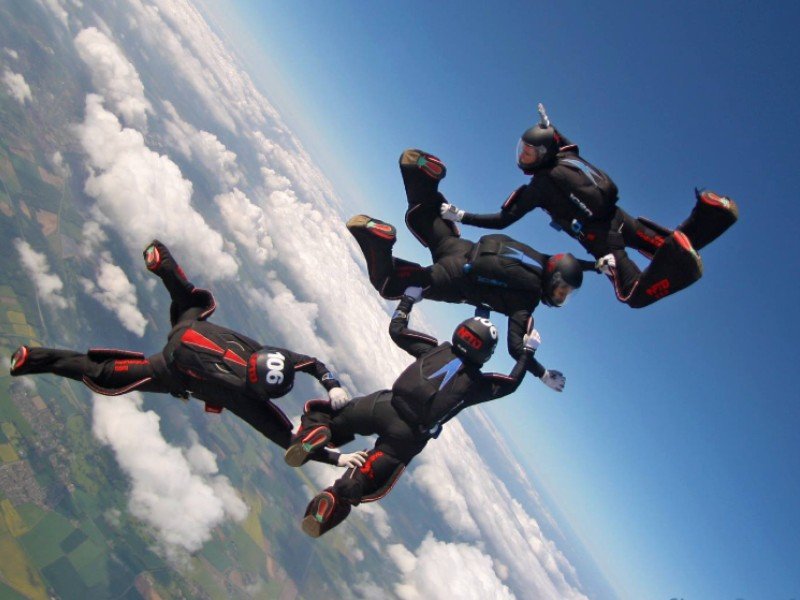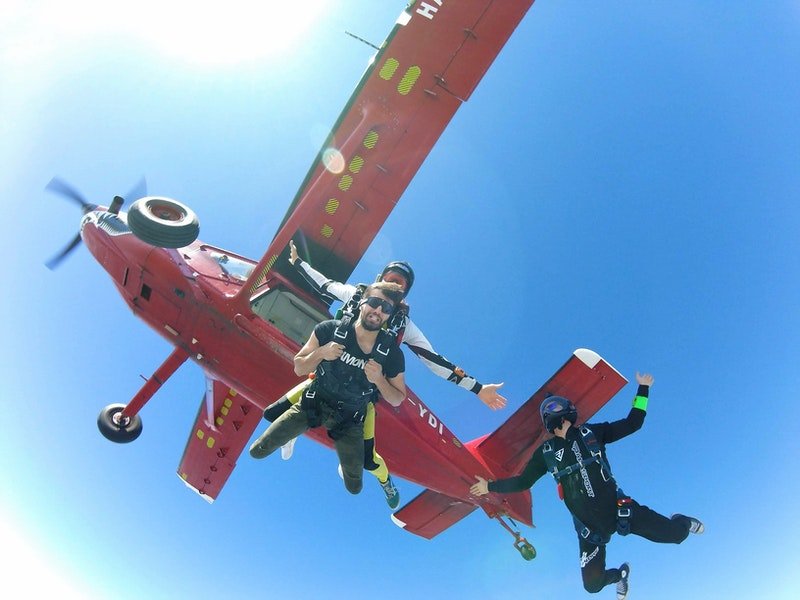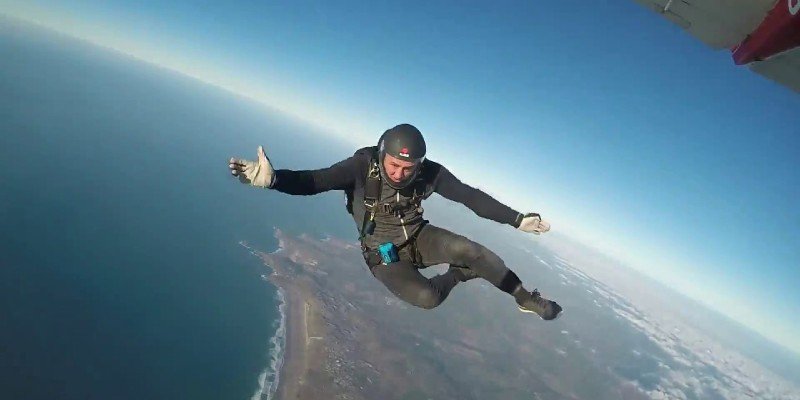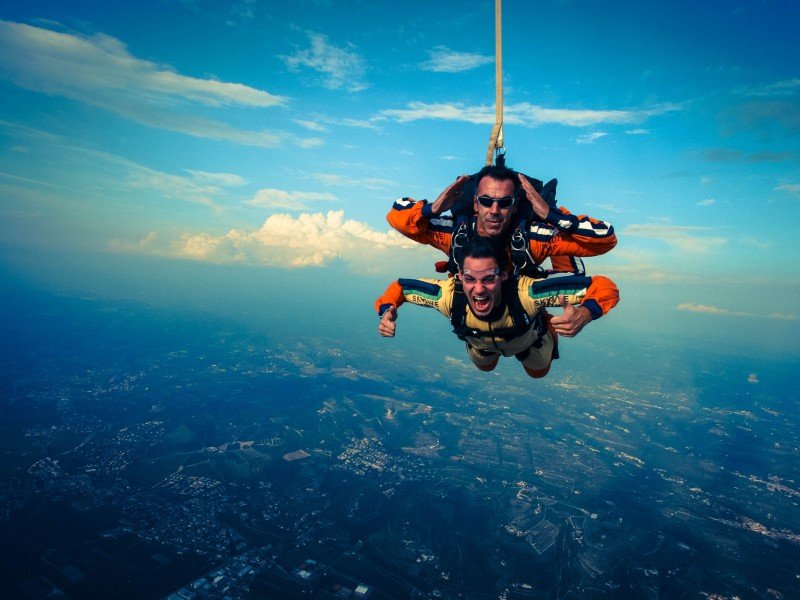Skydiving is a thrill that many people want to experience. Falling through the air above the clouds, feeling free as a bird, nothing quite beats that sensory overload. But do you have to skydive tandem the first time?
It’s a question that gets asked a lot; some don’t want to be attached to another person; they’d rather be in control of certain aspects of the jump – like when they exit the plane, for instance. Let’s delve a little deeper into the question to find out if you can skydive solo on your very first jump.
Can I skydive alone my first time?

The usual way a first-time skydive works is that you’ll pre-book a tandem dive; this is mainly because it’s the cheapest and quickest option to get you up and out of a plane.
There are a number of benefits to taking a tandem skydive over a solo first-time dive:
- You only need a quick 30-minute safety brief compared to a full day of training.
- There’s less for you to do so that you can enjoy the experience more; you don’t have to worry about pulling the parachute, holding the correct position in the air, landing, etc.
- Then there’s the cost; if you only ever intend to jump once, or maybe a handful of times in your life, a tandem is the most cost-effective way to do it.
But what if you don’t want to jump tandem? Well, yes, you can skydive on your own the very first time.
To jump solo on your first skydive, you’ll have to be signed up to an AFF – Accelerated Freefall skydiving course. Unfortunately, signing up for a full course like this can cost a few thousand bucks.
You will, however, be with two instructors holding you throughout freefall. This is purely for your safety so you can keep the correct position; they’ll also be talking to you all the way down, giving you further instruction.
Only once you’ve completed 25 instructor accompanied jumps and they’re happy with your progress, will you be deemed as ready to apply and be eligible for your USPA ‘A’ license.
How many times do you have to tandem skydive before you can solo?

Many people think you have to have logged a certain number of tandem skydives before you’re allowed to skydive without being strapped to someone else.
This isn’t true; you can go straight to a solo skydive (with instructors holding onto you) by signing up for an Accelerated Freefall course or AFF for short.
How much does it cost to skydive alone?

While a tandem skydive can cost very little, skydiving alone can be a substantial financial commitment.
As we’ve already mentioned, if you just wanted to skydive without being in tandem, you’d need to sign up for an AAF course, prices can include the whole course, or you can pay in stages.
Now it does vary from state to state, but a ballpark figure is around $350 – $450 for the first jump course, which is usually classed as Category A, moving on to Category B with two instructors, the price is $200 – $300 per jump.
To complete the whole course, 25 skydives, you’d be looking at around $4,500 to $5,500. Then there are a few smaller fees on top of that to cover the cost of your USPA fee and membership.
Comparing that to a tandem skydive which is normally $250 – $300, it will cost you roughly $100 – $150 by signing up for the Accelerated Freefall course. But you’ll also not have to go through the 4-6 hours of ground training beforehand, nor worry about pulling your chute and landing on your own.
It depends on what you want to get out of your skydiving experience; a tandem jump will allow you to enjoy it a lot more and be far less scary. On the other hand, a solo jump will require you to do a lot more work as well as costing you 20-30% more than a tandem.

